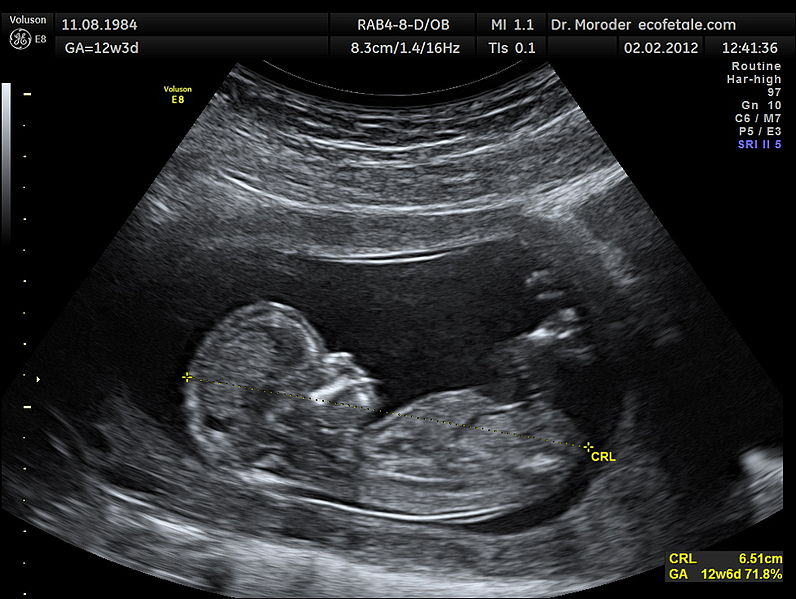A stressful pregnancy might be the last thing a future mother needs, but it is to her unborn baby that this stress spells real trouble. All because stress hormones (called glucocorticoids or GCs) can disrupt foetal brain development, leading to serious behavioural and emotional problems, much in the same way that traumas early in life can result in children with serious mental problems.
Despite these prenatal devastating health effects scientists remain far from understanding GCs mechani. But now a study in rats by Portuguese scientists has linked the hormone prenatal effect on behaviour to abnormalities in dopamine (a brain messenger). Remarkably researchers Sonia Borges and Barbara Coimbra from the University of Minho also discovered that it was possible (and easy) to reverse the behaviours abnormalities in these animals by simply restoring their dopamine levels to normal
The study by , which is coming out in September issue of the journal Neuropsychopharmacology, could help understand neuropsychiatric disorders associated with dopamine and/or early neurodevelopment problems, including depression, ADHD, schizophrenia or autism.
Ana João Rodrigues, one of study leaders (together with Nuno Sousa) warns for the need to be very cautious though “ Although there are some clues that prenatal stress may affect emotional and social behaviour in humans, our work is still at very early stages. All we can really say” – she points – “is that dopamine is able to improve deficiencies in social behaviour and this might have important implications for diseases characterised by social impairment”.
GCs are crucial life hormones – if they mediate the negative effects of stress, they are also involved in all types of normal functions of the body; from controlling the immune system and regulate the metabolism to even help the maturation of fetal organs, GCs are indispensable for life. In fact, even if they can provoke problems in the fetal brain, GCs are also given routinely to pregnant women in danger of premature delivery to help with fetal lung maturation.
In the work to be published, Borges, Coimbra and colleagues try to understand better the hormone's prenatal effects so better choices can be made balancing GCs positive and negative effects on the foetus. For that they expose rats still in the uterus to high levels of GCs (the equivalent of having a very stressed mother), and discover that the animals develop not only signs of depression and lack of motivation (like reported before), but also social impairments. In fact, rats exposed to prenatal stress played less and had less “happy” calls (“happy” and “sad” calls can be differentiated by their sound frequencies), but also interacted awkwardly with others.
“Since our group had seen before that exposure to prenatal GCs affected a neural circuit important for the feelings of reward and pleasure (the mesolimbic system)”, explains Rodrigues, “and in juvenile rats rough tumble and play is one of the most rewarding behaviours, we wondered if the problem could be dopamine, a key molecule in this system.”
And in fact, it was found that rats exposed to prenatal stress lacked dopamine in both the amygdala and the nucleus accumbens (NAc) - two regions of the mesolimbic system. But what was remarkable was the next discovery – that L-dopa (a precursor of dopamine given to Parkinson’s patients who also lack it) simply added to the water of the affected animals, was enough to fully reverse their social and emotional abnormalities.
So the new study reveals that high GC levels/prenatal stress can lead to social impairments, as well as the emotional problems seen in previous studies, and these appear to result from reduced dopamine levels in brain areas linked to pleasure perception, because, once dopamine levels are corrected, the behavioural problems vanish.

Ultrasound image of the foetus at 12 weeks of pregnancy by Wolfgang Moroder
So could things work similarly in humans? In diseases like depression, autism and schizophrenia, which are characterized by emotional and social inadequacies and/or have already been linked to prenatal stress?
Rodrigues alerts to the danger of making too many links - “To transfer these results to humans requires caution. These results do not mean that L-dopa is a miraculous drug to treat lack of motivation or depression, although it certainly appears that the mesolimbic dopamine system is critical in these problems. For now the most important thing is that we are starting to unveil GCs’ induced molecular changes in specific neuronal circuits, which will help in the understanding of some of these problems”.
Borges and Coimbra’s study is interesting also because it finally “links the dots” – prenatal stress has already been associated to an increased incidence of several neurologic diseases and some of these to problems in dopamine. Social impairments, like those seen autism and ADTH, on the other hand, are known to be more common in individuals that went through stressful prenatal periods. What the new study starts to reveal now is the “underneath story”. And, of course, the possibility of a treatment.
But the work had one other interesting result: when the social behaviour of the animals was being tested two rats exposed to prenatal stress put together didn’t play, but, surprisingly, the interaction of one of these and a normal animal couldn't be more different. This because the normal individual would not rest inciting and provoking the “disturbed” rat to play until this finally started interacting.
This supports the idea that interaction with other individuals can make a vital difference to revert the negative effects of pre-natal or early life stress on the brain, and should be encouraged as early as possible.






Comments